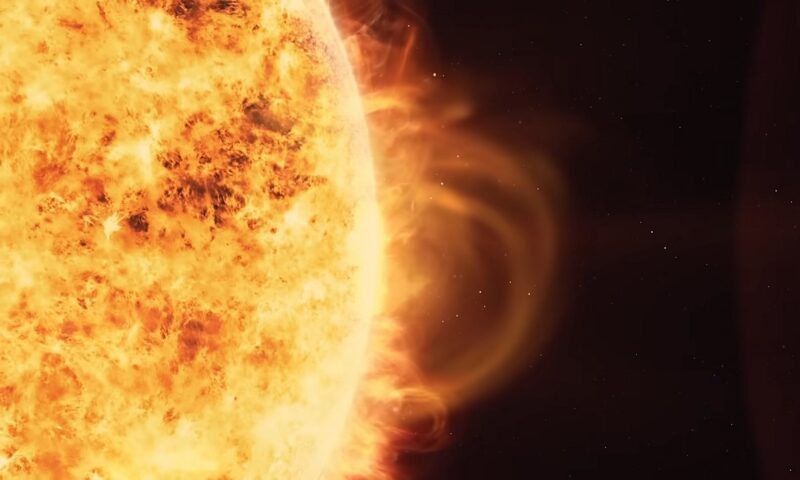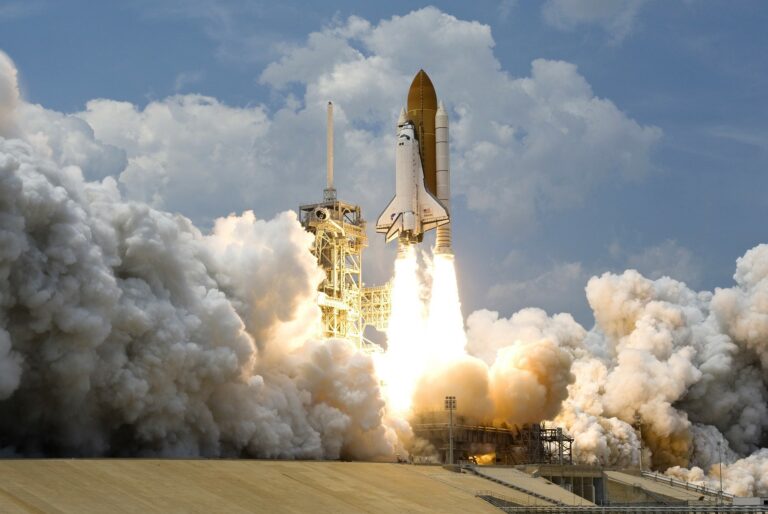Solar flares, intense bursts of radiation emanating from the Sun, hold significant importance due to their profound impact on Earth.
These occurences can disrupt communication networks, GPS systems, and even power grids, making an understanding of their nature and timing crucial.
That is why it is important to follow predictions and how to protect yourself from potential harm.
Recent Solar Activity

The National Oceanic and Atmospheric Administration (NOAA) has recently escalated the geomagnetic solar storm watch to a level 4 (“severe”), marking the most significant warning since January 2005.
The escalation is in response to multiple flares that are currently en route toward Earth.
The intensity and suddenness of these flares necessitate increased vigilance due to their potential to disrupt terrestrial and space-based systems.
A declaration of a severe level watch highlights the unpredictable nature of solar activity and the critical need for preparedness in technological and communication infrastructure worldwide.
In a remarkable astronomical event, two massive sunspots have converged, producing at least two X-class flares—the largest category—and several M-class flares, which are slightly less intense but still formidable.
The sheer scale of these sunspots, with one measuring 16 times the diameter of Earth, underscores their potential to unleash significant activity.
The fusion of sunspots and the resultant flares signify an escalated phase of solar activity, drawing attention from scientists and space weather experts who monitor such phenomena for potential impacts on Earth and its surrounding environment.
Possible repercussions of these solar flares and the associated coronal mass ejections (CMEs) are manifold, ranging from disruptions in GPS functionality to complications in satellite communications and widespread high-frequency radio blackouts.
The NOAA has issued warnings that these disturbances could persist for several hours, underscoring the potent and enduring nature of severe storms.
Heightened solar activity presents an opportunity for regions far from the poles, such as northern California and even Virginia, to witness the Northern Lights—a rare spectacle spurred by these geomagnetic disturbances.
Safety Tips and Preparedness
Preparing for solar flares involves a combination of personal readiness and technological safeguards.
I will go through the measures usually advised to individuals and organizations to protect themselves and their equipment from the unpredictable nature of solar activities.
Stay Informed Through Reliable Forecasting Systems
One of the most crucial steps in preparing for flares is to stay updated on solar activity through reliable forecasting and alert systems.
By subscribing to space weather alerts from trusted sources, individuals and organizations can receive timely notifications about upcoming events.
These systems provide critical information that can help in making informed decisions about necessary precautions.
Implement Device Protection Protocols

For individuals, protecting personal electronics involves simple but effective measures.
Ensuring that all critical electronic devices are either shielded from electromagnetic interference or unplugged during major events can prevent damage from electrical surges.
Specialized surge protectors and Faraday cages can be used to shield sensitive electronics from the indirect effects of flares.
Adopt Grid Protection Protocols
On an organizational level, particularly for utilities and companies managing critical infrastructure, implementing grid protection protocols is essential.
These may include installing grid-stabilizing technology that can tolerate large fluctuations in power caused by geomagnetic disturbances.
Adjusting the operational modes of satellites and other vulnerable technologies during periods of high solar activity can also significantly reduce the risk of damage.
Adjust Satellite Orbits
Adjusting the orbits of satellites or placing them in safe modes during intense solar storms can protect these valuable assets from the worst effects of flares and CMEs.
The proactive measure involves recalculating and altering satellite trajectories slightly to avoid the densest areas of space weather disturbances, thereby extending their operational life and maintaining communication and navigation systems on Earth.
Predictions for the Peak of Solar Cycle 25
As we approach the peak of Solar Cycle 25, experts anticipate a surge in solar activities such as flares and coronal mass ejections (CMEs).
The expected increase is typical of the cyclical nature of activity, which tends to rise and fall over approximately 11 years.
The upcoming peak is projected to bring about more frequent and possibly more intense solar phenomena. The impact of these events extends to more than just mere auroras.
It poses potential risks to Earth’s technological infrastructure, including:
- Satellites
- Power grids
- Communication networks
Advancements in Prediction Technology
With the advent of AI-driven prediction models, our ability to forecast solar activity has significantly improved.
Cutting-edge technologies utilize vast amounts of solar data to predict when and where solar flares might occur, giving us crucial lead times to prepare for potential disruptions.
These models analyze patterns in magnetic field activity on the Sun’s surface to forecast the likelihood of flares and CMEs.
The potential benefits of such advancements are considerable, as they could help safeguard critical infrastructure by providing timely warnings to operators of power grids, communication networks, and navigation systems.








